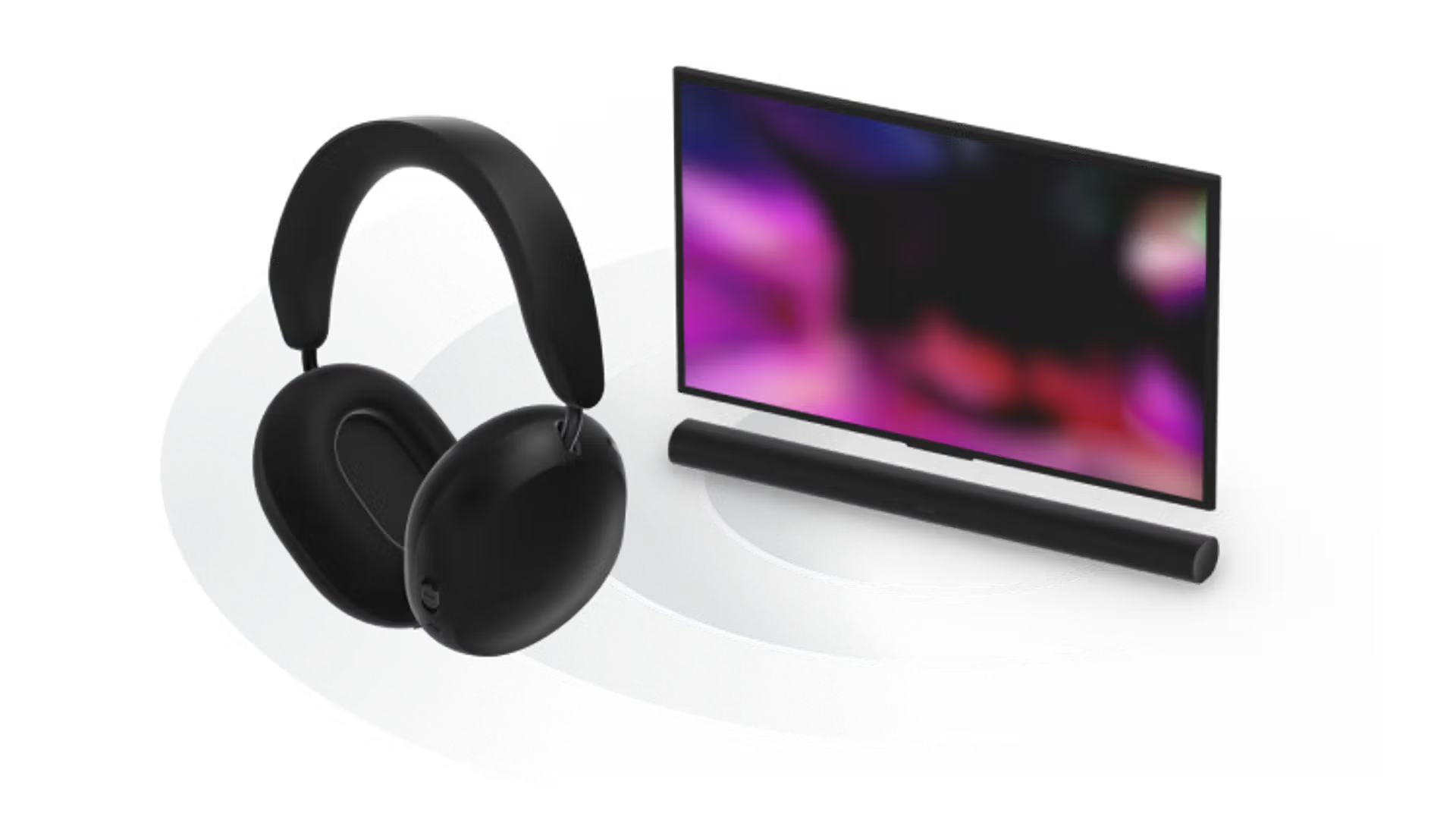Listen to your TV with Sonos Ace TV Audio Swap
When used with a compatible Sonos home theater speaker, you can listen to your home theater audio through Sonos Ace using the TV Audio Swap feature. This article goes over how to set up and use TV Audio Swap, the feature’s requirements, and the different settings you can adjust.
A maximum of two Sonos Ace headphones can be used together in a TV Audio Swap session.
Requirements
You can use the Sonos app for iOS or Android to set up TV Audio Swap with your Sonos Ace. WiFi must be enabled on the home theater speaker in order for it to work with TV Audio Swap.
Supported home theater speakers
You can use TV Audio Swap with the following home theater speakers:
- Arc
- Arc SL
- Arc Ultra
- Beam (Gen 1)
- Beam (Gen 2)
- Ray

Set up TV Audio Swap
To set up TV Audio Swap, Sonos Ace must already be set up in the Sonos app and connected to your iOS or Android device. To use TV Audio Swap with two Ace units, both must have TV Audio Swap set up.
- Go to the Settings menu and select your Sonos Ace in the Headphones section.
- Under Home Theater, select Add TV Audio Swap.
- Select the home theater speaker you’d like to use, then follow the instructions in the app to complete the setup process.
Swap audio from your TV to Sonos Ace
In order to swap home theater audio from your TV to your headphones, make sure your TV is on and that TV audio is already playing from your home theater speaker. A maximum of two Sonos Ace headphones can join a single TV Audio Swap session.
- On Sonos Ace, you can swap TV audio by pressing and holding the Content Key on the right ear cup. A second Ace can be added to the same TV Audio Swap session by pressing and holding the Content Key on another configured Ace unit.
- In the Sonos app, you can swap audio from Sonos Ace’s info screen. Select the Swap button to play TV audio through your headphones. A second Ace can be added to the same TV Audio Swap session by selecting the Join on the Sonos Ace info screen.
Sonos Ace home theater audio settings
While Sonos Ace is playing TV audio from your home theater speaker, you can adjust settings in the Sonos app related to spatial audio and head tracking.
Go to the Settings menu and select your Sonos Ace in the Headphones section. In the Home Theater section, you can adjust the settings listed below.
Spatial Audio
When spatial audio is enabled, your home theater speaker will create a spatial audio mix to send to your Sonos Ace. This provides a full surround sound experience when watching content that has surround sound or Atmos audio. When playing stereo sound, you’ll hear a virtualized spatial audio mix.
Dynamic Head Tracking
Dynamic Head Tracking adjusts the direction of your spatial audio when you move your head, creating the effect that your home theater audio is coming from a specific direction in the room.
When you enable Dynamic Head Tracking, the audio’s center point is assigned in front of where you’re facing. You can reset this by disabling the Dynamic Head Tracking setting, facing where you want your audio’s center point to be, then re-enabling Dynamic Head Tracking.
Dynamic Head Tracking is disabled when two Sonos Ace units are connected to TV Audio Swap simultaneously, and will be re-enabled after one user disconnects.